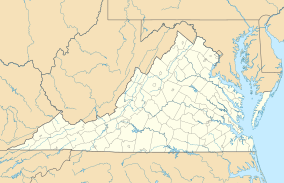Historic Jamestowne
| Jamestown National Historic Site | |
|---|---|
|
IUCN category V (protected landscape/seascape)
|
|

A statue of John Smith commemorating the site of the first permanent English settlement in America.
|
|
| Location | James City County, Virginia, United States |
| Nearest city | Jamestown, Virginia |
| Coordinates | 37°12′35″N 76°46′44″W / 37.20972°N 76.77889°WCoordinates: 37°12′35″N 76°46′44″W / 37.20972°N 76.77889°W |
| Area | 20.63 acres (8.35 ha) |
| Established | May 13, 1607 |
| Governing body |
Preservation Virginia (in partnership with NPS) |
| Website | Historic Jamestowne |
|
Jamestown National Historic Site
|
|
| Location | Jamestown Island, Jamestown, Virginia |
| Area | 20.6 acres (8.3 ha) |
| Built | 1607 |
| NRHP Reference # | 66000840 |
| VLR # | 047-0009 |
| Significant dates | |
| Added to NRHP | October 15, 1966 |
| Designated VLR | October 18, 1983 |
Historic Jamestowne is the cultural heritage site that was the location of the 1607 James Fort and the later 17th century city of Jamestown. It is located on Jamestown Island, on the James River at Jamestown, Virginia and operated as a partnership between Preservation Virginia (formerly known as the Association for the Preservation of Virginia Antiquities) and the U.S. National Park Service.
The site was designated Jamestown National Historic Site on December 18, 1940, and listed on the National Register of Historic Places on October 15, 1966. It was also designated a National Historic Chemical Landmark in 2007 by the American Chemical Society. It is adjacent and complementary with Jamestown Settlement, a living history museum built run by the Commonwealth of Virginia to interpret the early colony.
Jamestown, first established in the Virginia Colony at Jamestown, on May 13, 1607, was the site of the first permanent English settlement in North America. Upon arrival, the hundred-some colonists set about constructing a fort to protect themselves from the nearby Virginia Indian tribes and from a potential attack from the Spanish settlements in Florida. Between 1609 to 1610, lack of local food and replenishment of supplies from England, and inability to cope with disease led to the "starving time", which only 60 colonists survived. The colony was resupplied with new colonists, and over the next several decades became the center of government for the English colonists, and a port town for additional arrivals from England to the new land, with about 500 people living in or around it at its peak.
...
Wikipedia




